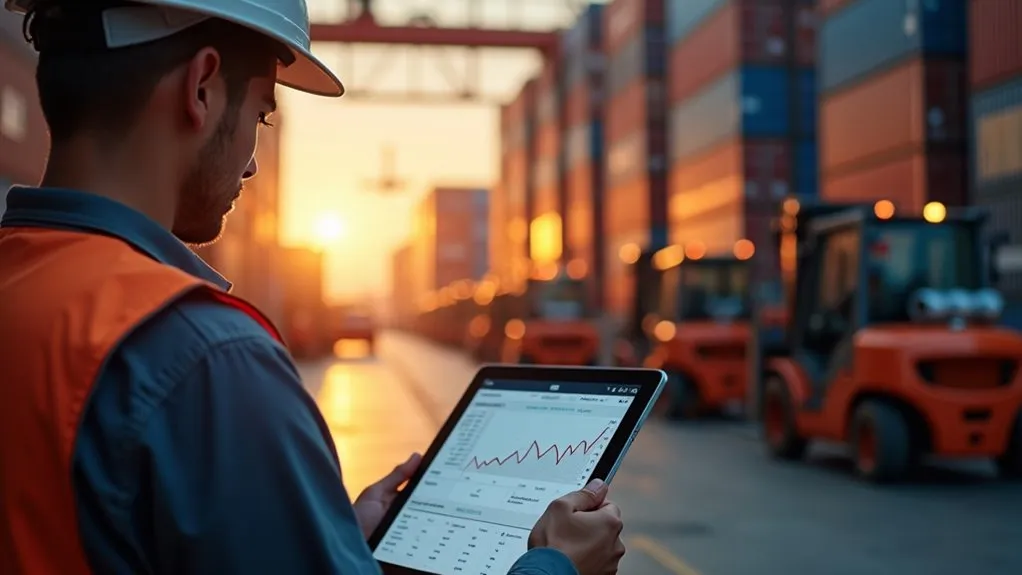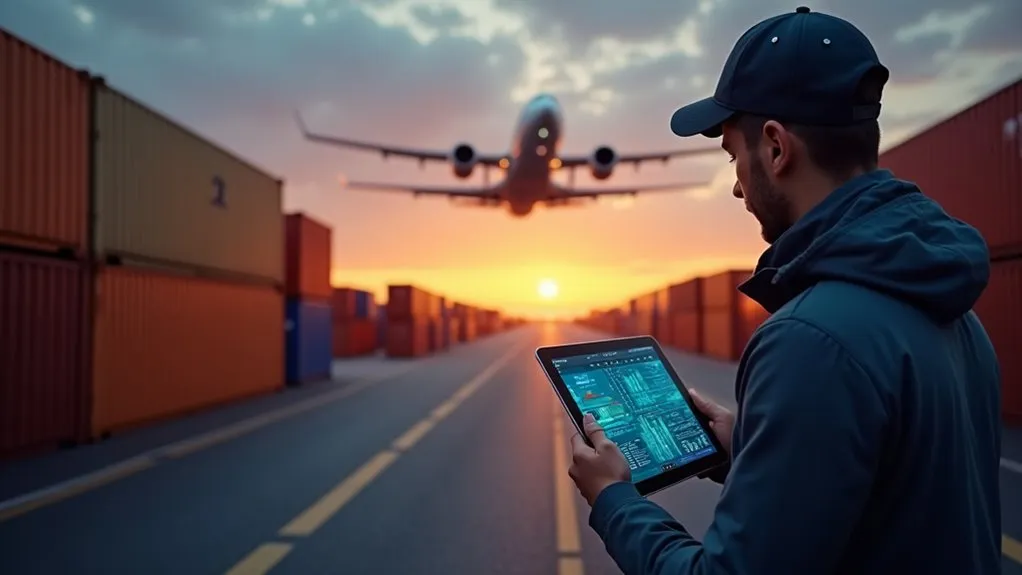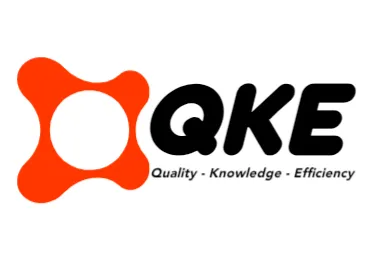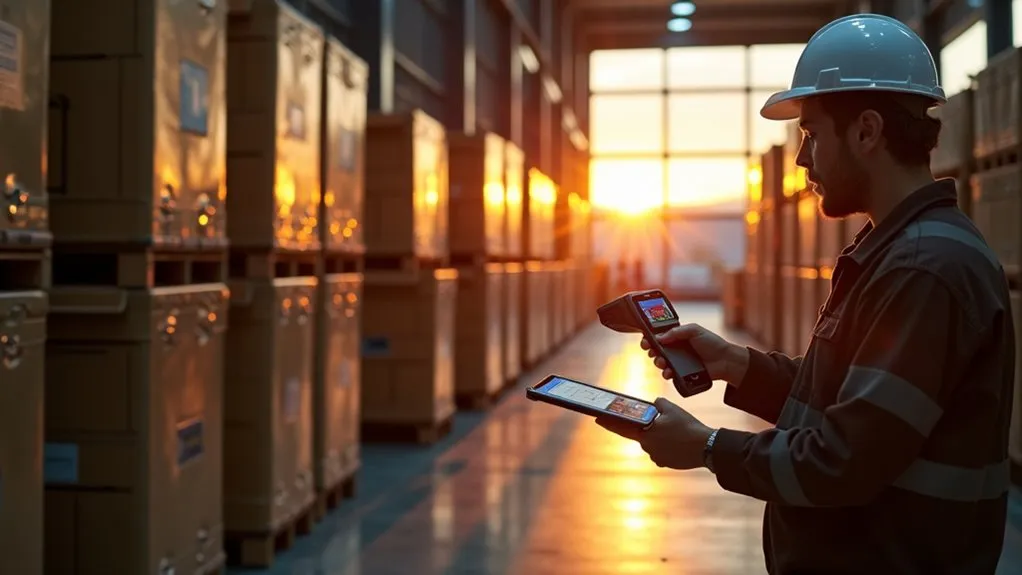Air track and trace systems enhance cargo monitoring with cutting-edge technologies like GPS and IoT sensors, delivering real-time location data and condition updates. These systems integrate data via cloud platforms, ensuring accuracy across global networks through API/EDI connections. They optimize resources, reduce costs, and prevent theft with geofencing alerts. Transparency and precise delivery timelines boost customer trust and operational efficiency. Explore further to uncover deeper insights into transforming air cargo visibility.
Key Takeaways
- Air Track and Trace uses GPS and IoT for precise, real-time cargo location monitoring.
- AWB scanning at checkpoints ensures instant status updates and transparency.
- e-AWB adoption reduces paper use and minimizes document loss risks.
- Geofencing alerts in tracking systems enhance security against theft.
- Data-driven insights from tracking optimize delivery timelines and efficiency.
Exploring the Basics of Air Track and Trace Systems
How do air track and trace systems ensure the seamless monitoring of cargo across global supply chains? These systems leverage advanced Tracking Methods, such as GPS for precise location data via satellite signals, RFID tags for error-free status updates using radio waves, and IoT devices like BLE sensors for real-time condition monitoring. By integrating data through cloud platforms and API/EDI connections, they consolidate information from multiple carriers, ensuring global accessibility and accuracy across the cargo journey from origin to destination.
A critical component is Document Handling, centered on the Air Waybill (AWB), a unique identifier with an 11-digit number linking cargo to flight systems. Scanned at checkpoints, the AWB updates status, while the e-AWB standard minimizes paper use and loss risks. This systematic approach, combining sophisticated Tracking Methods with meticulous Document Handling, ensures transparency and accountability for stakeholders, facilitating precise monitoring at every stage of air freight movement. Additionally, these systems enhance supply chain efficiency by providing real-time visibility into shipment status and potential delays.
Key Benefits of Real-Time Cargo Monitoring

Real-time cargo monitoring through air track and trace systems delivers substantial advantages to global supply chains by leveraging cutting-edge technology. It enhances visibility with instantaneous location and condition data via GPS and RFID, offering Transparency Benefits by enabling end-to-end oversight and fostering trust among stakeholders. Additionally, it provides Security Advantages through continuous tracking, reducing theft and loss risks with geofencing alerts and condition monitoring for sensitive goods.
Operational efficiency improves with optimized resource allocation and proactive issue resolution, while customer satisfaction grows through accurate updates. Data-driven insights further support strategic planning. Below is a snapshot of key impacts:
| Aspect | Benefit | Impact |
|---|---|---|
| Visibility | Real-time updates | Trust and transparency |
| Efficiency | Resource optimization | Cost reduction |
| Security | Theft prevention | Risk mitigation |
| Customer Experience | Accurate delivery timelines | Brand loyalty |
These benefits collectively transform air cargo logistics into a precise, reliable operation.
Overcoming Challenges in Air Shipment Tracking
Air cargo monitoring, while offering significant advantages as previously outlined, faces numerous obstacles that hinder seamless operations. Data Fragmentation across multiple stakeholders using disparate systems creates integration issues, compounded by a lack of Data Standardization in reporting formats. This results in manual data re-entry, increasing errors and delays. Additionally, traditional tracking relies on time-consuming manual processes like AWB number entry, further exacerbating inefficiencies and error risks.
To address these challenges, adopting Data Standardization protocols can unify disparate formats, streamlining data exchange among airlines, handlers, and customs. Implementing automated systems enhances Error Prevention by minimizing manual interventions, reducing delays from human mistakes. Moreover, overcoming technological barriers through scalable solutions can mitigate compatibility issues with legacy systems. By tackling manual inefficiencies and systemic hurdles like regulatory bottlenecks, air shipment tracking can achieve greater accuracy and reliability, ensuring smoother operations across fragmented networks and diverse operational environments.
Emerging Trends Shaping the Future of Cargo Visibility

Innovation is driving transformative changes in the realm of cargo visibility within the air freight industry. Emerging technologies are enhancing transparency and efficiency through precise, data-driven solutions. IoT sensors enable real-time monitoring of cargo conditions like temperature and location, ensuring integrity for sensitive shipments and providing immediate alerts for deviations. Simultaneously, AI Optimization transforms operations by refining route planning, predicting delays, and automating processes through advanced analytics, thus improving resource allocation and decision-making.
Further, Blockchain Security ensures a tamper-proof, decentralized ledger for sharing critical documents, reducing fraud risks and expediting customs clearance with immutable data. Digital twins offer virtual replicas for scenario simulation and predictive maintenance, while sustainability-focused tools track carbon footprints via optimized routing. These advancements collectively redefine cargo visibility, fostering trust, coordination, and environmental accountability across the supply chain, positioning the industry for a future of unparalleled precision and reliability in air freight monitoring.

 Tiếng Việt
Tiếng Việt 日本語
日本語 中文 (中国)
中文 (中国) 한국어
한국어
